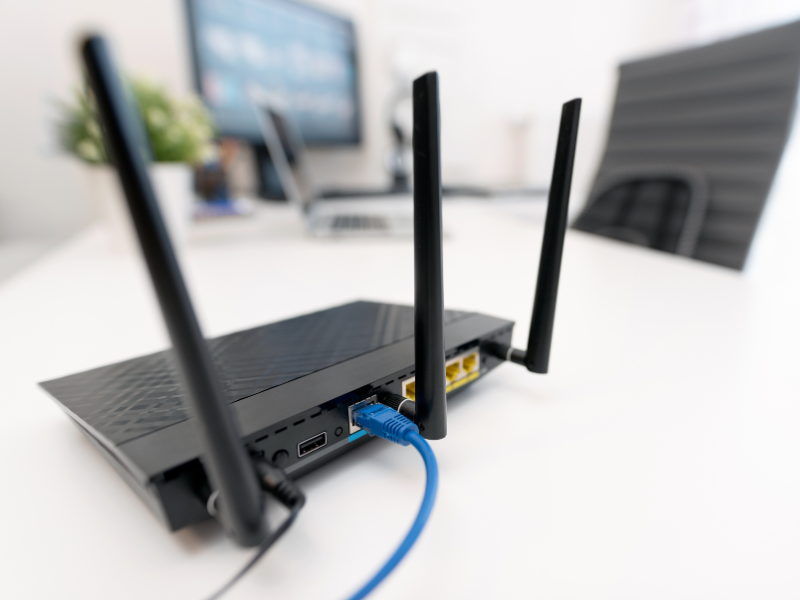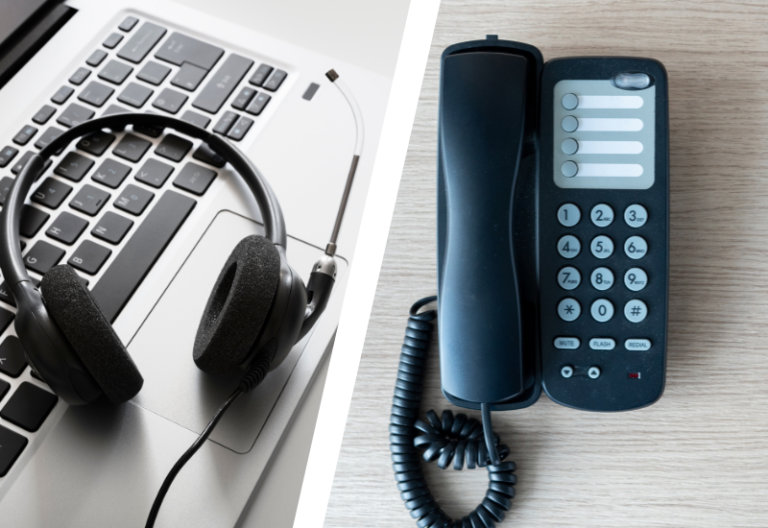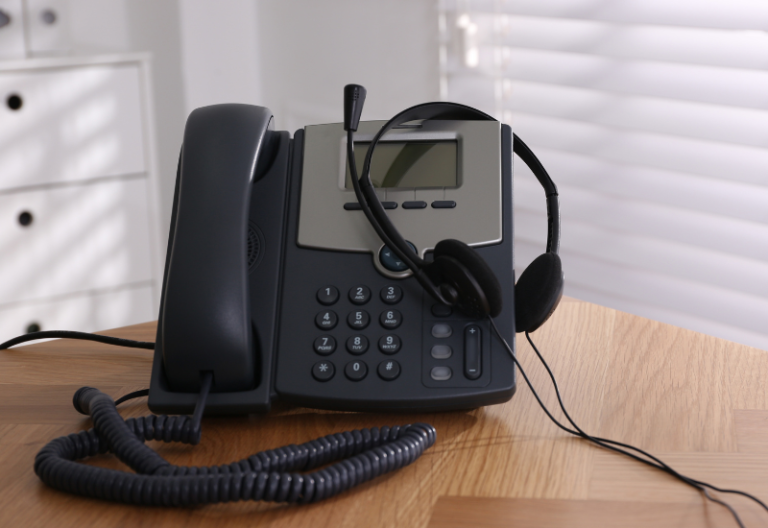Making phone calls has come a long way from the days of rotary phones and the Public Switched Telephone Network (PSTN). VoIP, or Voice over Internet Protocol, has emerged as an indispensable technology, transforming how businesses communicate.
This article answers the question: What is VoIP, and how does it work?
Table of Contents

How Does VoIP Work
VoIP (Voice over Internet Protocol) is a technology used for voice communication. You can use it on any data network that uses the Internet Protocol, like the Internet, Intranets, and Local Area Networks (LAN). Unlike traditional phone systems that rely on analog signals, VoIP converts voice into digital data packets sent over the Internet. VoIP also allows you to call regular phone lines. The Federal Communications Commission (FCC) says that if you’re calling a traditional phone line, the signal is converted to a telephone signal before it reaches the recipient.
This technology also works in different ways. Standard services allow you to call others who are also using VoIP. Some providers offer interconnected services, which lets you make and receive calls from traditional phones. Other vendors provide a computer, a special phone, or a landline with adapters. Moreover, wireless hotspots in airports, public places, and business establishments let you connect to the Internet, enabling you to use VoIP on a mobile device.
VoIP Protocols and Standards
The technology relies on protocols and standards that enable different VoIP products to work together. A Washington University in St. Louis publication and Wikipedia share some of the VoIP signaling protocols:
H.323
The International Telecommunications Union (ITU) recommends this standard to VoIP service vendors. It outlines the technical rules for talking over a Local Area Network (LAN), which is the network of computers in a specific location like an office. Additionally, it assumes that LAN doesn’t have a special feature called Quality of Service (QoS) to prioritize voice communication.
This standard covers both direct conversations between two points and group discussions involving multiple people. If different companies make products or apps that follow H.323 rules, they can interoperate and allow people to communicate with each other.
Session Initiation Protocol (SIP)
This standard was created by the Internet Engineering Task Force (IETF) to set up VoIP connections. It acts like a control system that manages, modifies, and ends sessions involving one or more participants. In SIP, your phone or computer sends requests to the server, and the server responds accordingly. A set of requests and their corresponding responses form a transaction.
Key services that SIP offers include:
- Determining a user’s location
- Setting up calls by ringing and establishing parameters
- Checking if a user is available for a call
- Understanding the capabilities of the user regarding media use
- Handling the transfer or termination of calls
Extensible Messaging and Presence Protocol
XMPP is a protocol for real-time communication. It is mainly used for instant messaging, presence information (to know if someone is online or offline), and contact list maintenance. As the name says, it is designed to be extensible and offers multiple VoIP, gaming, file exchange, and video applications.
Supporting Protocols
SIP collaborates with other protocols for smooth VoIP operation. These supporting protocols include:
- RSVP (Resource Reservation Protocol) – reserves resources in the network, ensuring smooth flow of data for VoIP calls
- RTC/RTCP (Real-time Transport Protocol/Real-time Transport Control Protocol) – RTP handles the real-time transmission of data, while RTCP manages control functions like monitoring and managing the transmission quality.
- RTSP (Real-time Streaming Protocol) – used for the controlled delivery of streaming data, allowing for seamless multimedia streams during a VoIP call
- SAP (Session Announcement Protocol) – utilized for advertising multimedia sessions and informing devices about the availability of multimedia content
- SDP (Session Description Protocol) – responsible for describing the multimedia sessions, detailing the types of media involved and their characteristics

VoIP Hardware and Software Components
The Cybersecurity and Infrastructure Security Agency explains the following hardware and software for VoIP functionality:
Dedicated routers
Dedicated routers facilitate VoIP calls using traditional phones. They require no special software and only need to be attached to ordinary phones and connected to cable/DSL modems or high-speed Internet sources. Portable and adaptable, routers can help you make calls anywhere with a broadband internet connection.
Adapters (USB)
USB adapters enable the use of traditional phones for VoIP calls. Connecting to phones via standard modular jacks, they mimic standard phone service operation while setting up Voice over IP calls. Once connected, your phone behaves like a regular phone service.
Softphones
Software apps or softphones allow VoIP calls directly from a computer equipped with a headset, microphone, and sound card. VoIP vendors usually provide softphones as part of other subscription plans.
Dedicated VoIP Phones
These devices resemble ordinary corded or cordless phones but connect directly to a computer network instead of a traditional phone line. Dedicated VoIP phones are available from VoIP providers that operate on the Internet or LAN.

VoIP Call Setup Process
The VoIP call setup process goes through the following steps:
- Initialization: The user initiates a call through their VoIP software or hardware.
- Authentication: The VoIP system verifies the identity of the user.
- Addressing: The Voice over IP system identifies the call’s recipient, converting the recipient’s phone number or user name into an IP address.
- Session establishment: The system connects the user and recipient.
- Media transmission: The voice data is transmitted via the Internet using protocols like RTP.
- Session termination: The VoIP system ends the session, releasing allocated resources and updating call records.
Choosing a VoIP Provider
Now that you know how Voice over Internet Protocol works, it’s time to tap into its benefits by choosing a VoIP provider that aligns with your standards and requirements. If you haven’t already done so, consider choosing one that ensures a smooth transition from traditional PBX systems.
You can also choose iFax and get instant access to all the communication tools you need to elevate your business.







